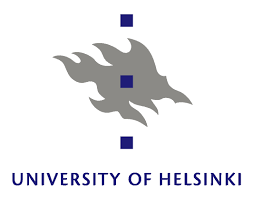The Ion Exchange for Nuclear Waste Treatment and for Recycling is a research group at the Department of Chemistry at the University of Helsinki. Recently, they have been working on materials that can be used to remove radioactive contamination from water.
The material that they are investigating is electospun sodium titanate. Electrospinning is a way to produce fibers by using electric force to draw charged threads out of polymer solutions or polymer melts. The fibers produced are hundreds of nanometers in size. This process does not require the use of chemicals to coagulate the solution or high temperatures to produce solid threads from a solution.
Synthetic sodium titanate is known to be a good material to use for the removal of strontium from water. It is produced and used in granular form in industrial quantities for treating radioactively contaminated waste water. The waste water at the Fukushima nuclear power plant is currently being decontaminated with granular sodium titanate
Sodium titanate is employed in ion exchange systems. In ion exchange, water contaminated with ions of an unwanted material is run through a column full of ion exchange materials. In the remediation of strontium contaminated water, the sodium in the sodium titanate replaces the strontium ion which bonds to other opposite charged ions in the electrospun sodium titanate fibers which can then be removed from the water and disposed of.
The benefit of using electrospun sodium titanate fibers is that the speed of the ion exchange process is faster than standard granular sodium titanate ion exchange and the electrospun sodium titanate is more efficient. Because less of the electrospun sodium titanate is needed than running the process with granular sodium titanate, the resulting volume of solid radioactive waste is smaller and more easily disposed of.
The original ion exchange process was pioneered by Jukka Lehto and Risto Harjula from the University of Helsinki. The electrospinning equipment at the University of Helsinki was designed and built by the Centre for Excellence for Atomic Layer Deposition. The team leader was Mikko Ritala. It was a simple process to create electrospun sodium titanate with the equipment. The researchers tested the fibers that were produced and found that the ion exchange process using the fibers behaved in a chemically similar way to the process using granular sodium titanate.
This is a major advancement in the treating of strontium contaminated waste water. Produced by a simple process, the electrospun sodium titanate is faster and more effective than the granular sodium titanate and it leaves less radioactive waste to be disposed of. Ultimately, it is a better and cheaper method of waste water remediation.
With the huge volume of waste water stored at Fukushima and with more waste water being generated every day, this new better cheaper method of treating that water to remove strontium is a very welcome development. There are many bodies of water contaminated with strontium scatter around the world. It is difficult if not impossible to prevent this water from leaking out of its current location into ground water and surface water. There are many places where this new remediation method could be usefully applied.
